Respirators: One Size Doesn’t Fit All
Whether you're a carpenter sanding timber, a welder exposed to fumes, or a spray painter dealing with vapours, choosing the wrong respirator can put your health at serious risk. The right respirator depends on what you're breathing in and how often. Here’s how to find the best fit for your trade, based on Australian safety standards.
What Are You Protecting Against?
Before you choose a mask, you need to know what hazards you’re working around. Common airborne risks on Aussie worksites include:
- Silica dust (common in construction and demolition)
- Wood dust (carpentry, cabinetry, sanding)
- Welding fumes (metal fabrication, arc welding)
- Asbestos fibres (demolition, plumbing, electrical)
- Paint overspray & solvent vapours (automotive, industrial painting)
- Organic gases (chemical handling, agriculture)
Types of Respirators & When to Use Them

1. Disposable P2 Respirator Masks
✔️ For tradies working around dust, particles, and non-toxic fumes. Certified to AS/NZS 1716, these are the standard choice for protection against fine dust (e.g. silica, wood, asbestos). Ideal for short tasks or when a reusable option isn’t practical.
2. Half-Face Reusable Respirators
✔️ For frequent or long-term use in dusty or chemical-heavy environments. Use with replaceable P2 or P3 filters (and gas cartridges if needed). A good option for painters, spray foam installers, or workers in dusty sites.
3. Full-Face Respirators
✔️ For higher hazard environments where face and eye protection are needed. Offers superior sealing and integrated eye protection. Best for spray painting, high-chemical use, or when protection from splash and vapours is required.
4. Powered Air-Purifying Respirators (PAPR)
✔️ For long shifts, hot environments, or high-risk airborne exposure. Battery-powered units that blow filtered air into a headpiece or helmet. Commonly used in welding, mining, or confined space jobs. Offers comfort and high filtration with less breathing resistance.
P2 vs P3 Filters: What’s the Difference?
- P2 Filters: Protect against dust, mist, and fumes (95% filtration efficiency). Suitable for most trades.
- P3 Filters: Higher protection (99.95%) used for toxic particles, fine asbestos dust, and high-risk exposure.
Fit Matters
Even the best respirator won’t protect you if it doesn’t fit properly. Always perform a fit check before use. Beards, stubble, and poor strap adjustment can break the seal and reduce protection.
Shop Certified Respirators at Safety Direct
We stock AS/NZS 1716-approved respirators, filters, and PAPR systems trusted by Aussie tradies. Whether you're working with paint, dust, gas, or welding fumes, we’ve got the right mask for your trade and the right advice too.

